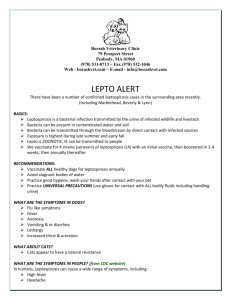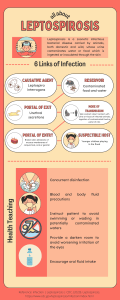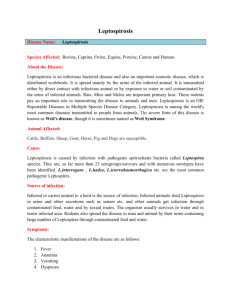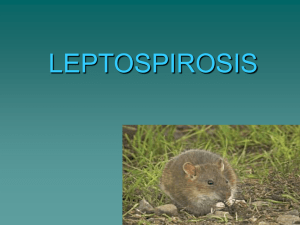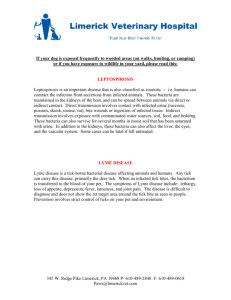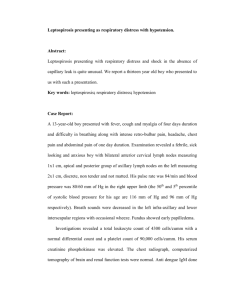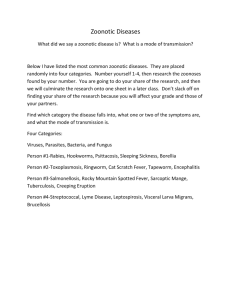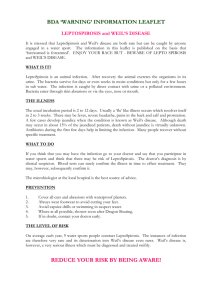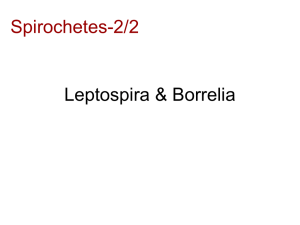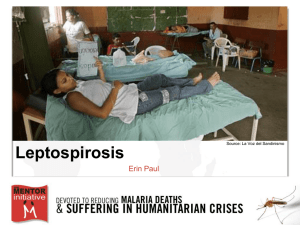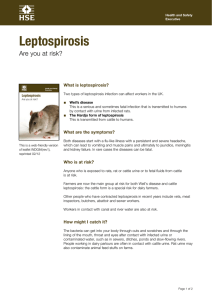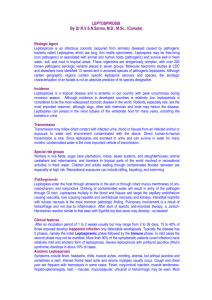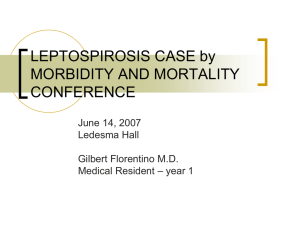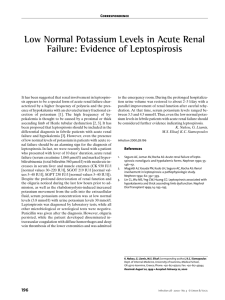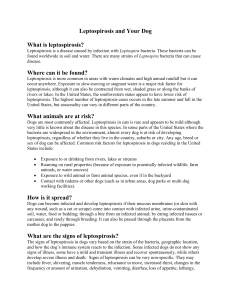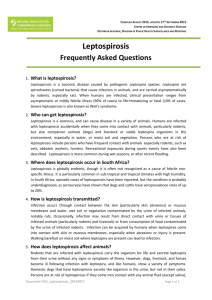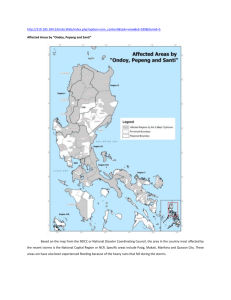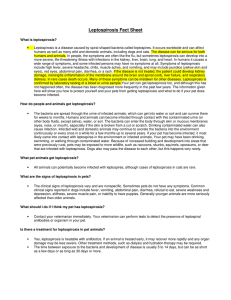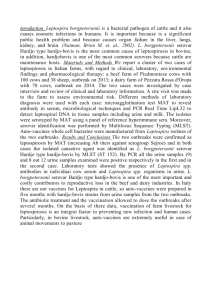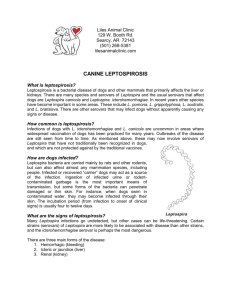lepto-alert
advertisement
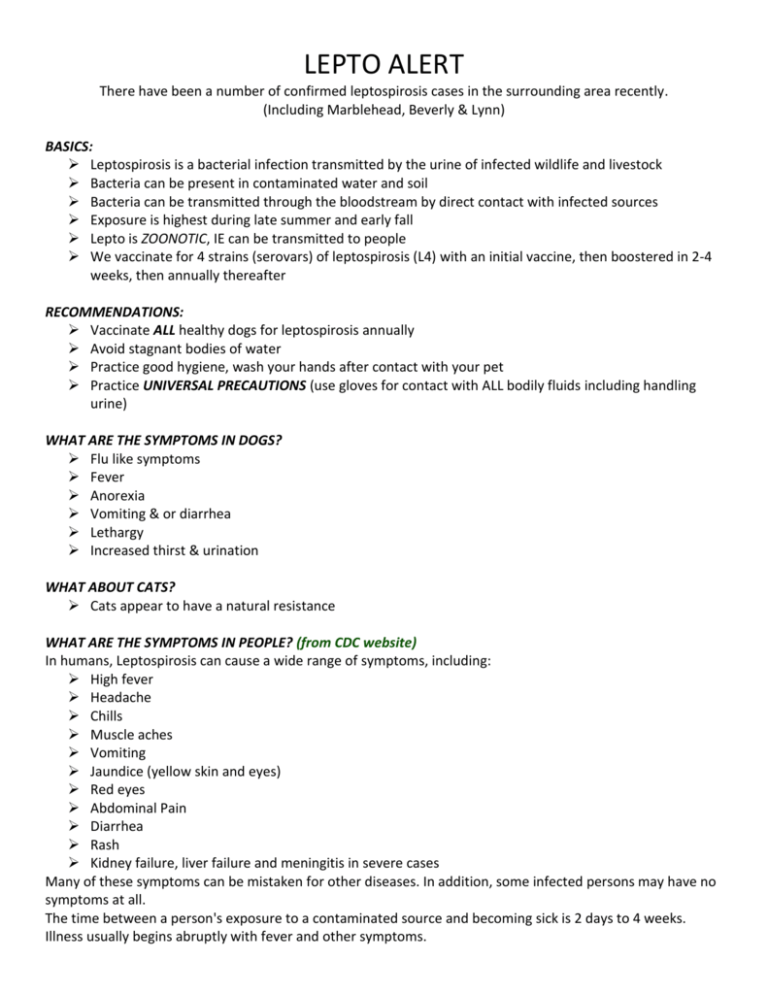
LEPTO ALERT There have been a number of confirmed leptospirosis cases in the surrounding area recently. (Including Marblehead, Beverly & Lynn) BASICS: Leptospirosis is a bacterial infection transmitted by the urine of infected wildlife and livestock Bacteria can be present in contaminated water and soil Bacteria can be transmitted through the bloodstream by direct contact with infected sources Exposure is highest during late summer and early fall Lepto is ZOONOTIC, IE can be transmitted to people We vaccinate for 4 strains (serovars) of leptospirosis (L4) with an initial vaccine, then boostered in 2-4 weeks, then annually thereafter RECOMMENDATIONS: Vaccinate ALL healthy dogs for leptospirosis annually Avoid stagnant bodies of water Practice good hygiene, wash your hands after contact with your pet Practice UNIVERSAL PRECAUTIONS (use gloves for contact with ALL bodily fluids including handling urine) WHAT ARE THE SYMPTOMS IN DOGS? Flu like symptoms Fever Anorexia Vomiting & or diarrhea Lethargy Increased thirst & urination WHAT ABOUT CATS? Cats appear to have a natural resistance WHAT ARE THE SYMPTOMS IN PEOPLE? (from CDC website) In humans, Leptospirosis can cause a wide range of symptoms, including: High fever Headache Chills Muscle aches Vomiting Jaundice (yellow skin and eyes) Red eyes Abdominal Pain Diarrhea Rash Kidney failure, liver failure and meningitis in severe cases Many of these symptoms can be mistaken for other diseases. In addition, some infected persons may have no symptoms at all. The time between a person's exposure to a contaminated source and becoming sick is 2 days to 4 weeks. Illness usually begins abruptly with fever and other symptoms.
